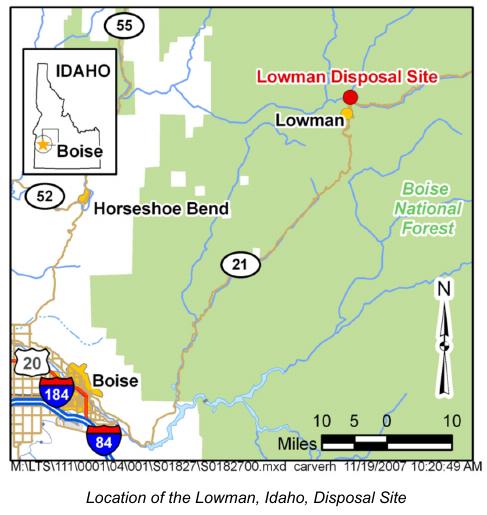The EEOICPA was passed in 2000. It provides compensation to workers who became ill as a result of their employment manufacturing nuclear weapons in the USA, as well as their spouses, children, and grandchildren. Uranium Mill in Lowman EEOICPA coverage is available for qualified former Workers and their families.
Are you eligible for compensation? If you or a family member worked at this or another DOE facility and became ill, you may be entitled to compensation of up to $400K plus medical benefits. Call EEOICPA Counsel Hugh Stephens at 1-855-548-4494 or fill out our free claim evaluation, We can help even if you’ve already filed, even if your claim was denied!
Here, we have compiled publicly available information and documentation about the facilities covered by the Act to clarify how their activities relate to the Energy Employees Occupational Illness Compensation Program Act.
Uranium Mill in Lowman
State: Idaho
Location: Lowman
Time Period: DOE (Remediation) 1992; 1994 – present
Facility Type: Department of Energy
Facility Description: From 1955 to 1960 columbite/euxenite and monazite concentrates were separated from placer ore. These milling operations are covered under the auspices of the Radiation Exposure Compensation Act and are not separately covered under EEOICPA. However, DOE environmental remediation contractors performed remediation Uranium Mill Tailings Radiation Control Act (Public Law 95-604) at this location in 1992. The remediation involved cleanup of contaminants left over from operation of a mechanical concentrator for extraction of uranium and thorium from sand at this location. In 1998 DOE constructed a water diversion system in furtherance of environmental remediation goals. DOE and DOE contractor employees who performed this remediation and construction are covered under EEOICPA. Additionally, in 1994 ownership of the property was transferred to DOE.
Listing:
Uranium Mill in Lowman is listed as a Department of Energy (DOE) site under the EEOICPA.
Site Description and History:
The Lowman disposal site is the location of a former mechanical concentrator for sands containing rare-earth elements, uranium, and thorium. The site is located in Boise County, Idaho, approximately 73 miles northeast of Boise and one-half mile northeast of the town of Lowman. The disposal cell is bordered by State Highway 21 on the south, Clear Creek on the west, and U.S. Forest Service land on the north and east. The land surrounding the site is mountainous and heavily forested and is used for recreation, grazing, logging, and mining.
From 1955 to 1960, Porter Brothers Corporation operated the Lowman mill, where columbite/euxenite and monazite concentrates were separated from placer ore dredged from Bear Creek 18 miles south of the mill. During these operations, approximately 200,000 tons of dredge concentrates were produced. The concentrates were sent to Mallinckrodt Chemical Works at Hematite, Missouri, where niobium and tantalum pentoxides, uranium oxide, rare-earth elements, thorium-iron residues, and titanium were produced. Following the mill closure, Velsicol Chemical Corporation, formerly known as the Michigan Chemical Corporation, purchased the site. The State of Idaho acquired the land for remedial action and has transferred title to the U.S. Department of Energy (DOE).
Past milling operations generated about 129,400 cubic yards of radioactive materials consisting of uranium, radium, and thorium in residual sand, soil, and construction debris. Surface remediation consisted of consolidating and encapsulating all contaminated material from the Lowman site and local contaminated vicinity properties into an onsite engineered disposal cell. The disposal cell occupies approximately 8 acres of the 18-acre tract of land.
*Source


















